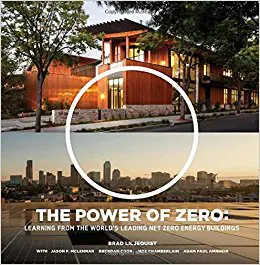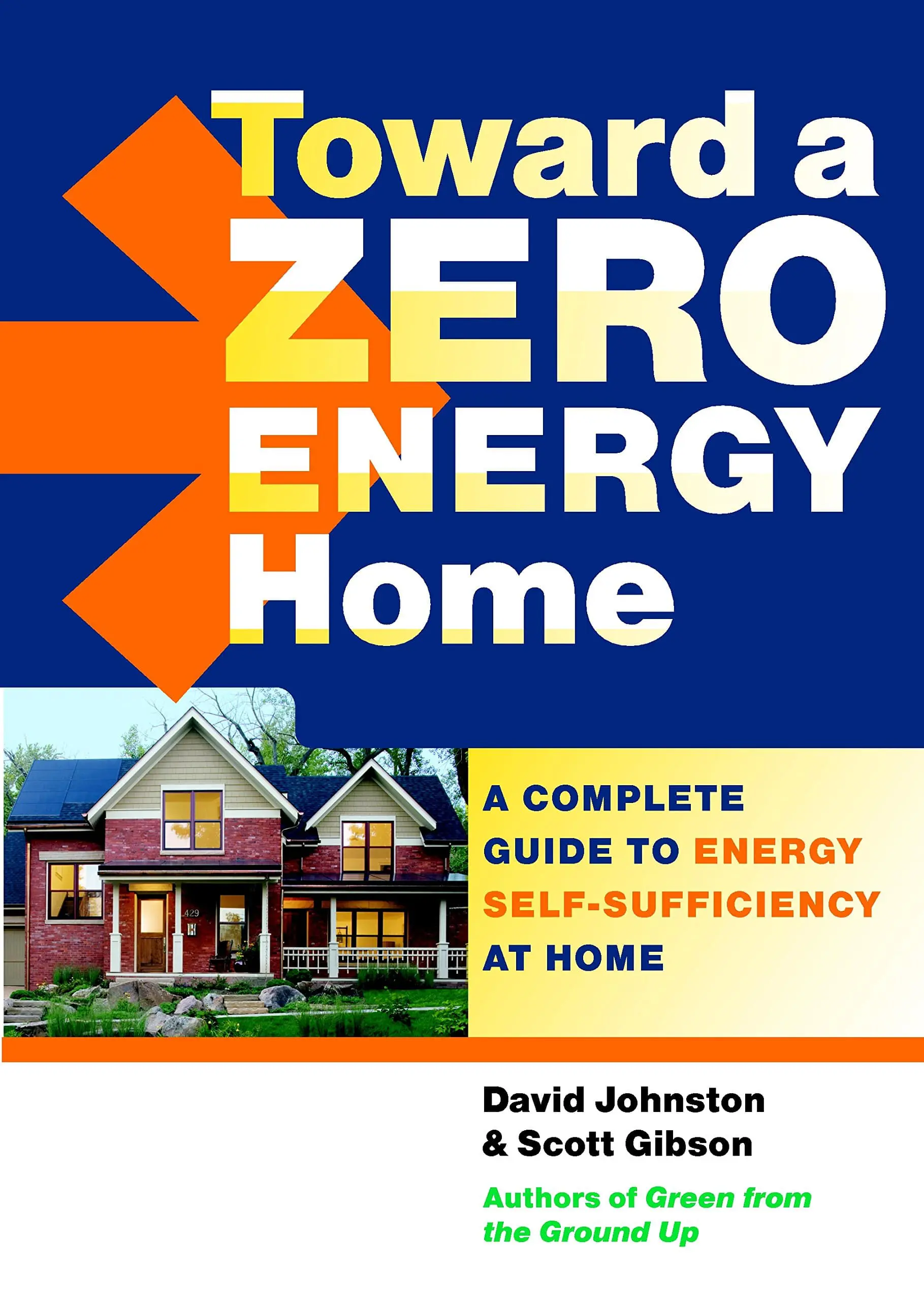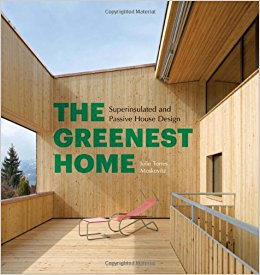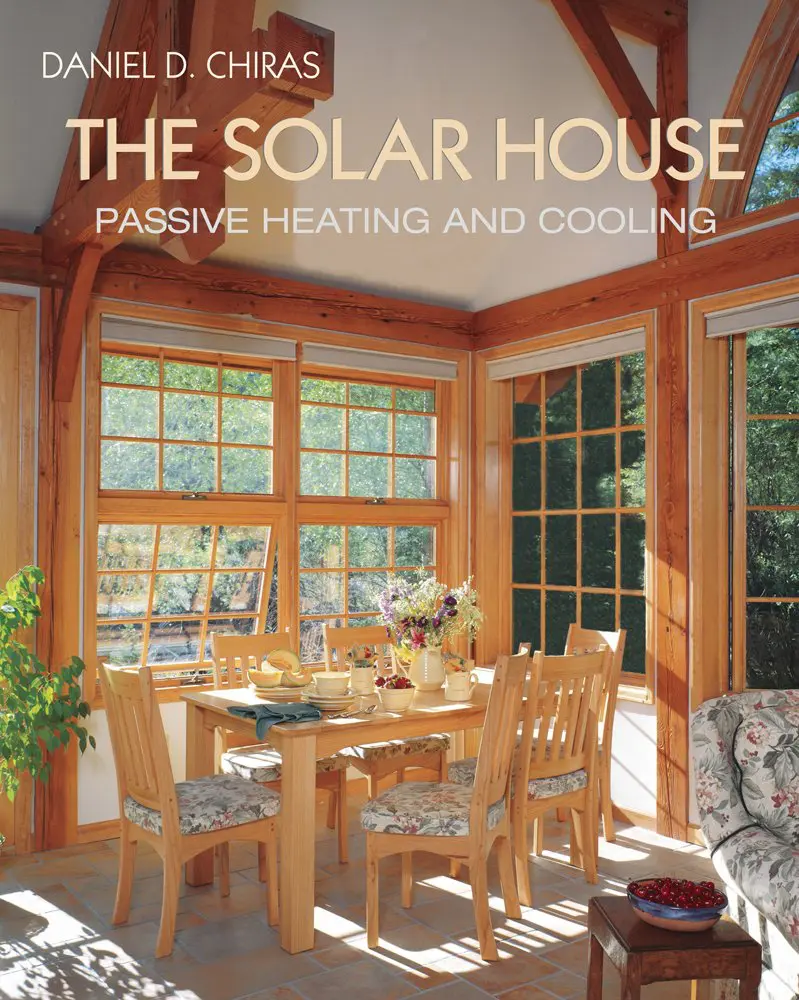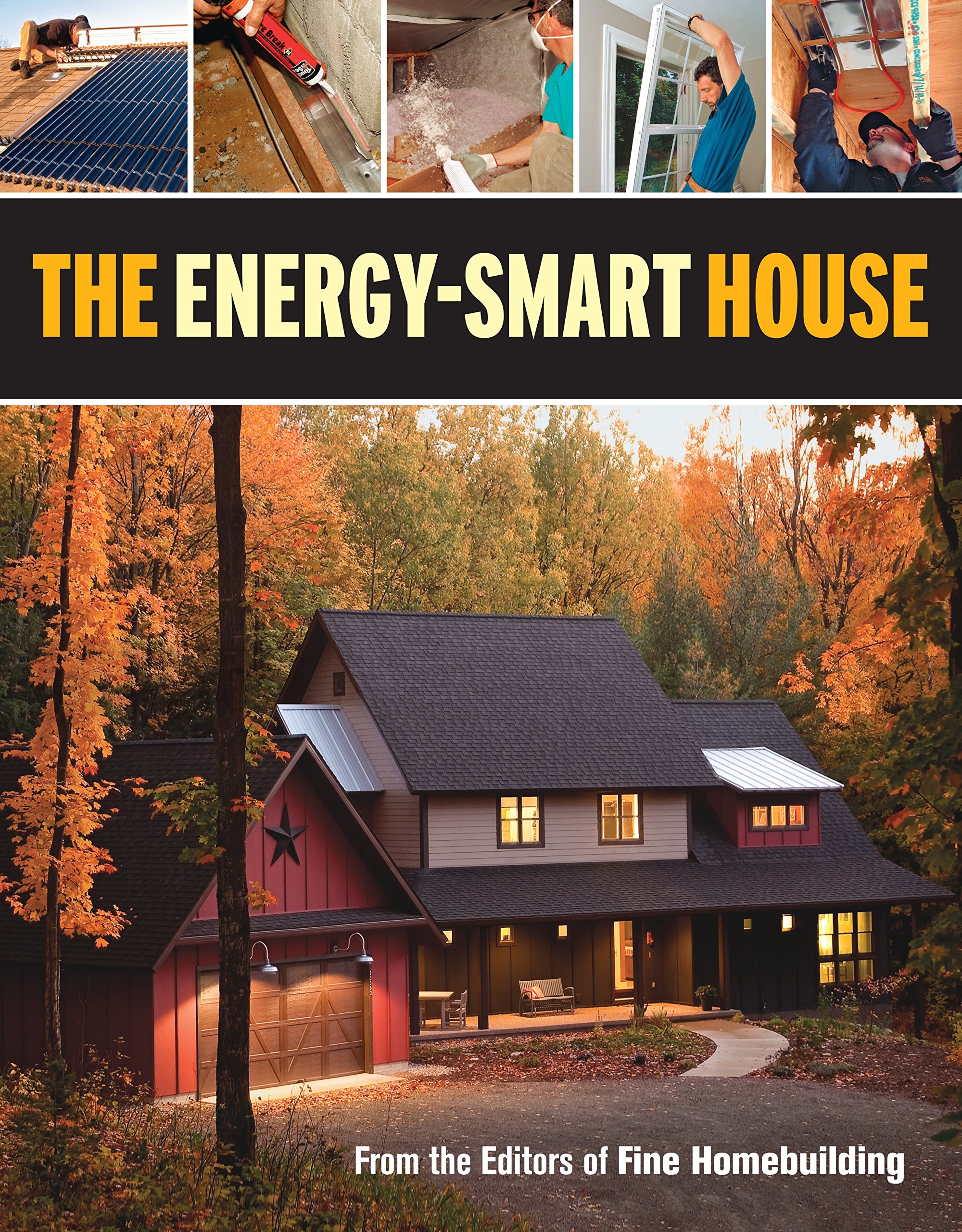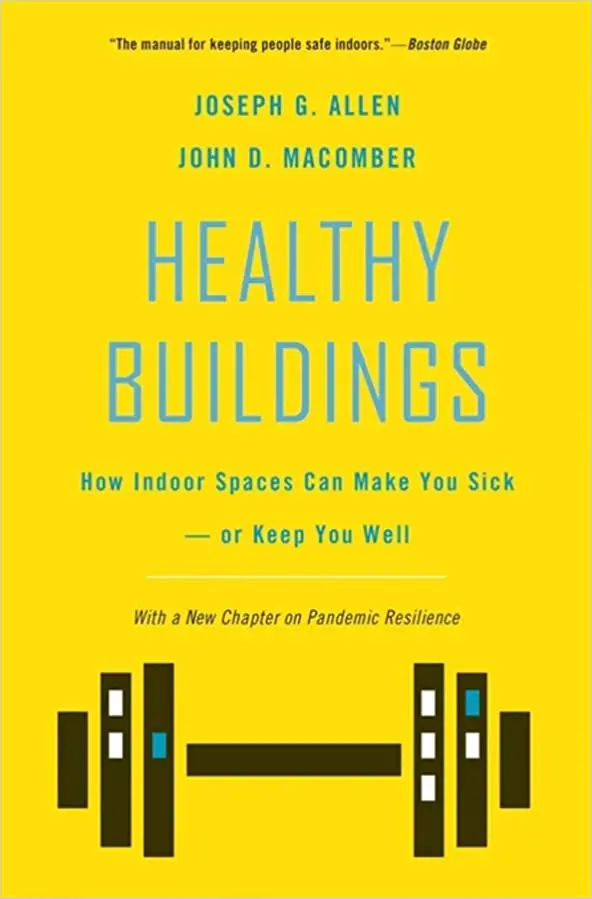Here are 9 must-read net zero energy home books
We are a participant in the Amazon Services LLC Associates Program, an affiliate advertising program designed to provide a means for us to earn fees, at no additional cost to you, by linking to Amazon.com and affiliated sites.
BILL MACLAY, THE NEW NET ZERO: LEADING-EDGE DESIGN AND CONSTRUCTION OF HOMES AND BUILDINGS FOR A RENEWABLE ENERGY FUTURE
Beyond simply being energy-efficient, net-zero homes produce as much energy as they consume and are carbon neutral. In The New Net Zero, sustainable architect Bill Maclay charts the path for designers, builders, and homeowners interested in exploring green design’s new net-zero frontier. Maclay is an award-winning net-zero designer whose projects have achieved high-performance goals at affordable costs. His book shares a wealth of state-of-the-art information on everything from embodied energy and residential net-zero standards to monitoring and costs; and more. Also included are several case studies, and you’ll be happy to hear that both new building and renovation projects are covered in detail.
Brad Liljequist, The Power of Zero: Learning from the World’s First Net Zero Energy Buildings
The Power of Zero showcases the world’s leading net zero energy buildings, demonstrating tangible examples, successful strategies, and actual data for developers, designers, and contractors to effectively achieve net zero energy performance. Projects include commercial, residential, and institutional buildings, both new and remodeled, in an array of different climates. The Power of Zero is written in a transparent and readable style for both the interested layperson and the engaged technician. As well, the book contains many nuggets of technical and design wisdom for the most well-informed designer. Part I begins with an exploration of the underlying principles of and reasons for achieving net zero energy at the building and community scale. Part II presents nineteen unique case studies from proven Net Zero Energy Certified projects in a variety of climates with different typologies and sizes. Part III delves into the visionary master planning involved in the creation of net zero energy communities, including several case studies of leading-edge existing neighborhoods operating at the forefront of low energy use.
Scott Gibson and David Johnston, Toward a Zero Energy Home: A Complete Guide to Energy Self-Sufficiency at Home
A Zero Energy Home (ZEH) – a home that produces as much energy as it consumes – is an idea whose time has come! Authors David Johnston and Scott Gibson (Green from the Ground Up) explore the design and construction of self-sufficient houses from start to finish.
They make the case for a ZEH; cite climate and geographic challenges; describe exactly how to go about building an energy-efficient home; and feature ten houses that were built for zero energy living. With unequaled knowledge and a passion for the subject, the authors walk readers through the process of building and living in a truly green home.
Julie Torres Moskovitz, The Greenest Home: Superinsulated and Passive House Design
Passive is the new green. Passive Houses—well insulated, virtually airtight buildings—can decrease home heating consumption by an astounding 90 percent, making them not only an attractive choice for prospective homeowners, but also the right choice for a sustainable future. The Greenest Home showcases eighteen of the world’s most attractive Passive Houses by forward-thinking architects such as Bernheimer Architecture, Olson Kundig Architects, and Onion Flats, among many others. Each case study consists of a detailed project description, plans, and photographs. An appendix lists helpful technical information. Including a mix of new construction and retrofit projects built in a variety of site conditions, The Greenest Home is an inspiring sourcebook for architects and prospective homeowners, as well as a useful tool for students, and builders alike.
Daniel Chiras, The Solar House: Passive Heating and Cooling
In the United States, passive solar architecture experienced a major resurgence of interest in the 1970s in response to crippling oil embargoes. With grand enthusiasm but with scant knowledge (and sometimes little common sense), architects and builders created a wide variety of solar homes. Some worked pretty well, but looked more like laboratories than houses. Others performed poorly, overheating in the summer because of excessive or misplaced windows and skylights, and growing chilly in the colder months because of insufficient thermal mass and insulation and poor siting.
In The Solar House, Dan Chiras sets the record straight on the vast potential for passive heating and cooling. Acknowledging the good intentions of misguided solar designers in the past, he highlights certain egregious—and entirely avoidable—errors. More importantly, Chiras explains in methodical detail how today’s home builders can succeed with solar designs that create a comfortable and affordable passive solar house that will provide year-round comfort in any climate. And, since modern building materials and airtight construction methods sometimes result in air-quality and even toxicity problems, Chiras explains state-of-the-art ventilation and filtering techniques.
The Editors of Fine Homebuilding, The Energy-Smart House
See the big picture like the pros do. It takes more than a Band-Aid approach to achieve true energy efficiency. And, here, you’ll get a complete overview from our experts, starting with how to do an audit through evaluating heating and cooling systems to choosing new thermostats.
Put together a practical plan. Upgrading an older home? Our pros will show you how to beef up old insulation without tearing into walls, install weather stripping, and choose replacement windows. Or remodeling? Learn all you need to know about house wraps, options for solar hot water, how to design an energy-smart kitchen, select the most efficient appliances, and much more.
Your roadmap to an energy-efficient home. With so many advances in technology and product choices, you’ll want The Energy-Smart House to help you make effective changes that go beyond lip service. It’s your answer to workable strategies for reducing waste and making your home as energy efficient as possible.
Martin Holladay, Musings of an Energy Nerd: Toward an Energy-Efficient Home
In this fascinating collection of postings from his popular “Musings of an Energy Nerd” blog, Green Building Advisor’s Martin Holladay cuts through the hype and myths about energy efficiency, sustainability, and green building to present the very best ways to make your home more energy efficient.
Martin Holladay has been making weekly postings to his “Musings of an Energy Nerd” blog on Green Building Advisor since January 2009. Along the way, he has gathered a devoted following of “energy nerds” who await his weekly musings with rapt anticipation. For the first time, the 50 most popular postings have been assembled in book form to give homeowners a great opportunity to live a more energy-efficient life in their homes.
The book begins with an overview of energy priorities, and a discussion of what we mean by terms like green and sustainable. Martin presents several options for energy upgrades for an existing house (from replacing windows to adding superinsulation) before looking at ways to improve the energy efficiency of a new house. Separate chapters follow on HVAC, domestic hot water, appliances, and renewable energy, before the book wraps up with an eye-opening chapter on useless products, scams, and myths (including Martin’s list of “Stupid Energy-Saving Tips”).
Ann V. Edminster, Energy Free: Homes for a Small Planet
Individuals and institutions have been working toward “zero-energy” homes for decades. This volume is a record of those collective efforts, distilling their experience into a practical and comprehensive how-to guide. The author includes resource information and step-by-step guidance on how to make decisions that will yield an energy-free residential project, whether new or existing, in an urban or a rural setting. The unique needs and opportunities of each context are addressed.
The principal topics include: Project boundaries (why you have to consider not only your home’s behavior, but also your own); Prioritizing strategies (e.g., insulation vs. photovoltaics); Economics (including payback periods and incentives); How to minimize a building’s energy needs; How to minimize your energy needs; and, How to power the energy needs that remain.
Energy Free offers a wide array of resource information, including detailed window and insulation comparisons; assessments of the relative contribution of different building elements; and overall performance.
Barry Rehfeld, Home Sweet Zero Energy Home: What It Takes to Develop Great Homes that Won’t Cost Anything to Heat, Cool or Light Up, Without Going Broke or Crazy
Home Sweet Zero Energy Home is a practical guidebook that clearly shows how zero energy homes can be good, livable, affordable homes. The author identifies all the pieces of the zero energy puzzle and how they fall into place, and explains how homeowners and buyers can also take smaller steps towards sharply reducing the energy use of existing buildings. Focusing on real costs and savings, this book takes an in-depth look at:
- Site selection and passive design;
- Insulation, windows, doors, and building materials;
- Heating and cooling;
- Appliances and electronics; and,
- Financial resources and incentives
Whether you are a prospective buyer, owner, or developer, Home Sweet Zero Energy Home is your complete guide to creating a more comfortable, efficient, environmentally friendly home without breaking your back or your bank account.
Bonus for a Net Zero Energy, Healthier Home!
Joseph G. Allen and John D. Macomber, Healthy Buildings: How Indoor Spaces Can Make You Sick―or Keep You Well
For too long, we’ve designed buildings that don’t focus on the people inside―their health, their productivity, and how that all impacts finances. Healthy Buildings breaks down the science and makes a compelling business case for creating healthier spaces for working and living.
Levels of carbon dioxide, particulates, humidity, pollution, toxic fumes, and volatile organic compounds from everyday products can influence our health in ways people generally don’t understand. In tightly insulated, energy-efficient homes, indoor air quality alone makes a compelling case for more environmentally friendly and less-toxic choices. Joe Allen and John Macomber dispel the myth that we can’t have both energy-efficient buildings and good indoor air quality. We can―and must―have both.




